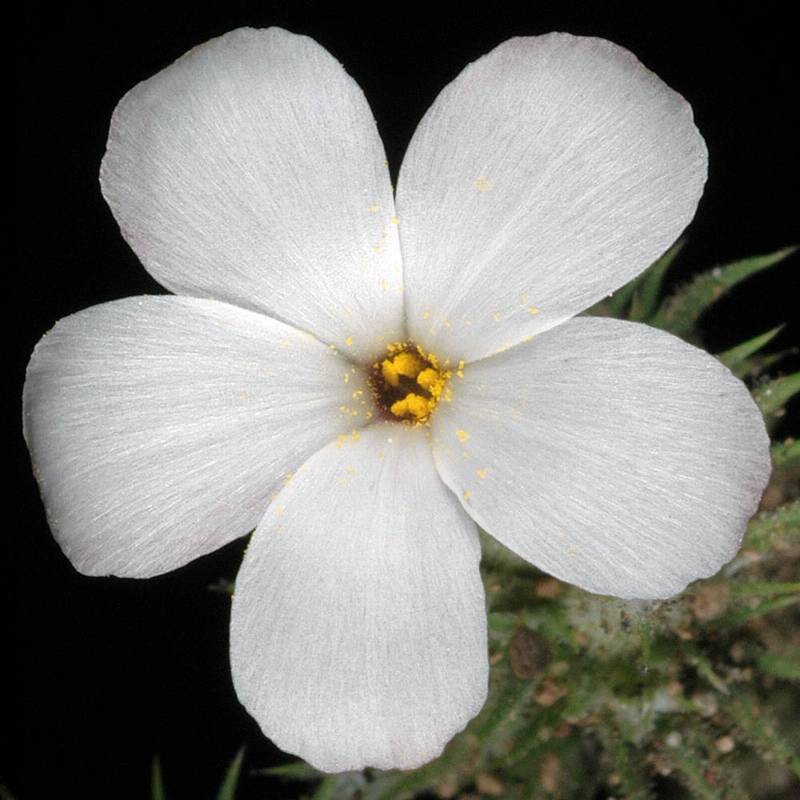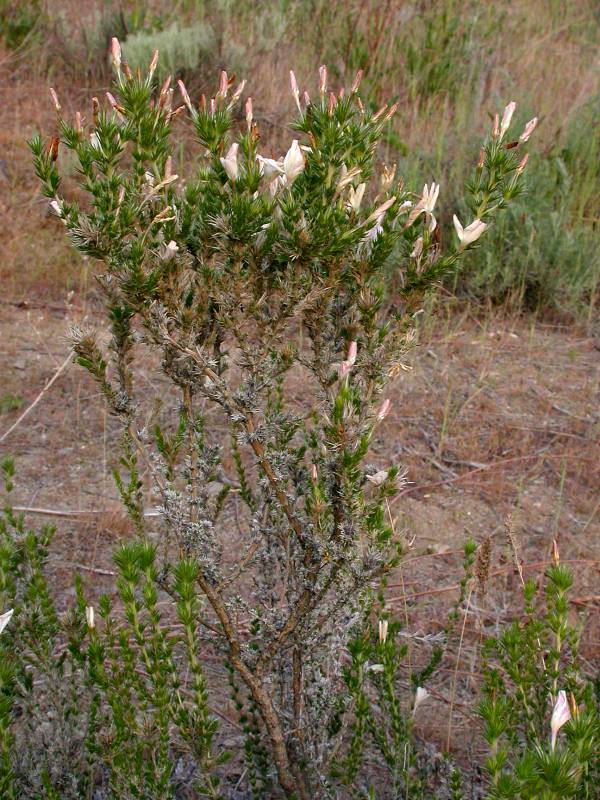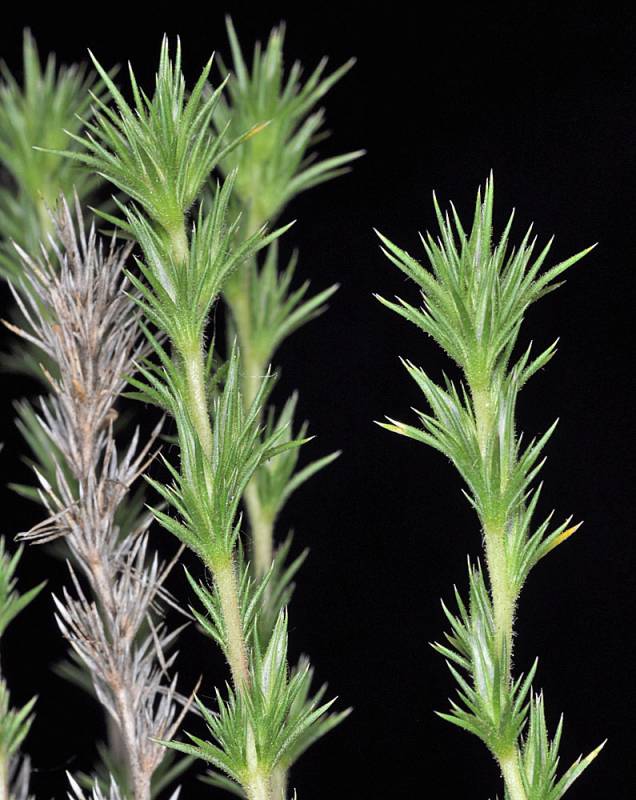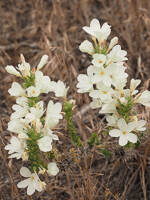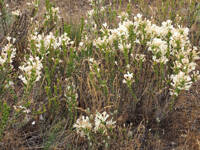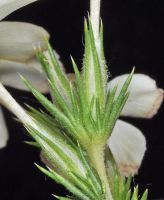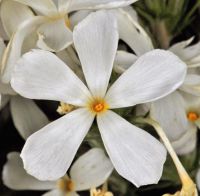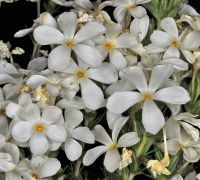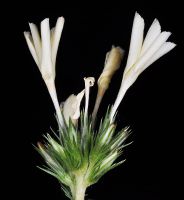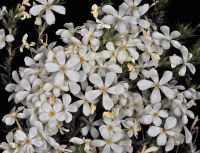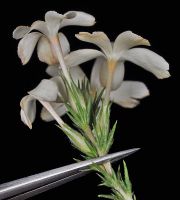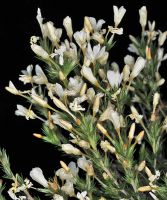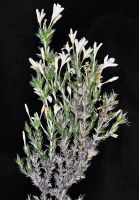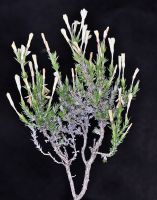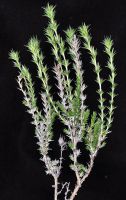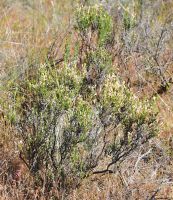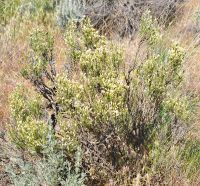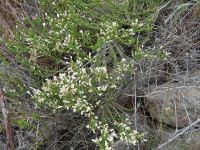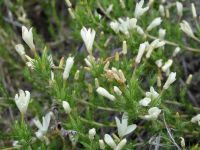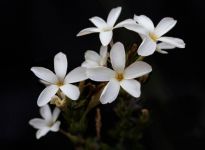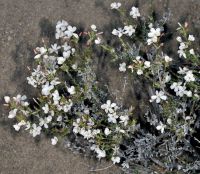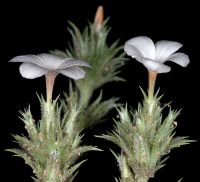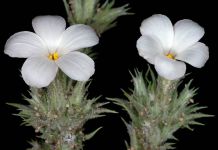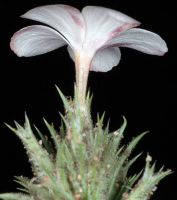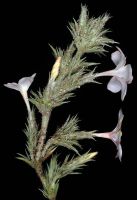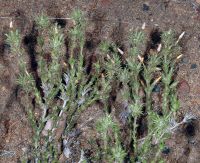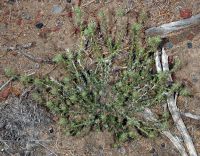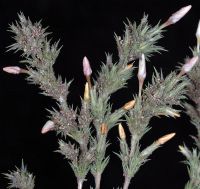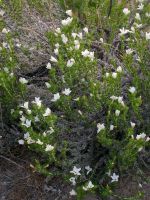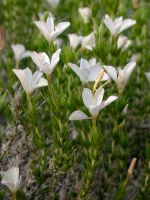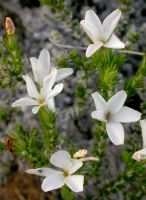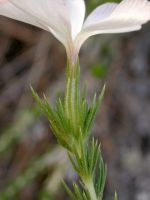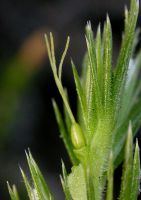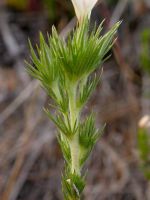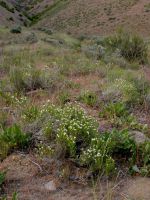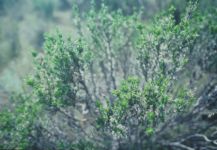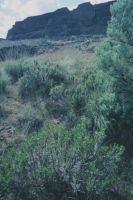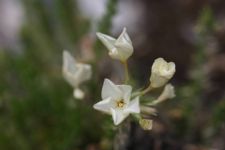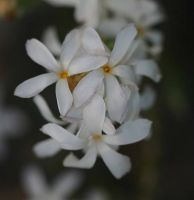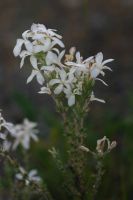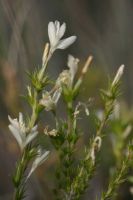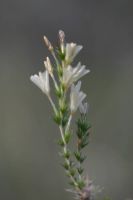Distribution: Occurring east of the Cascades crest in Washington; British Columbia to Baja California, east to the Rocky Mountains.
Habitat: Dry, open, sandy or rocky places, from sagebrush desert and plains to moderate elevations in the drier mountains.
Flowers: May-July
Origin: Native
Growth Duration: Perennial
Conservation Status: Not of concern
Pollination: Bees, flies, butterflies, moths
Branched shrub 1-6 dm. tall, sweetly aromatic, usually glabrous and occasionally glandular.
Leaves numerous and crowded, alternate, or the lower opposite, 5-12 mm. long, divided palmately into 3-7 linear, rigid, spinulose-tipped segments
Flowers solitary in the leaf axils; calyx 7-10 mm. long, with translucent intervals between the 5 segments, which terminate in a spinulose tip; corolla white to yellowish, with a hint of lavender on the outside, 1.5-2.5 mm. long, the slender lobes 6-10 mm. long, opening at night; anthers 5, small, the filaments equally inserted above the middle of the corolla tube; style 3-parted; ovary superior.
Capsule usually with 3, several-seeded carpels.
Publication: Aliso 19(1): 82. 2000.
Gilia pungens (Torr.) Benth.
Gilia pungens (Torr.) Benth. var. hookeri (Douglas ex Hook.) A. Gray
Leptodactylon hazeliae M. Peck
Leptodactylon lilacinum Greene ex Brand
Leptodactylon pungens (Torr.) Nutt. [HC, IMF4]
Leptodactylon pungens (Torr.) Nutt. ssp. eupungens (Brand) Wherry
Leptodactylon pungens (Torr.) Nutt. ssp. hallii (Parish) H. Mason
Leptodactylon pungens (Torr.) Nutt. ssp. hazeliae (M. Peck) Meinke
Leptodactylon pungens (Torr.) Nutt. ssp. hookeri (Benth.) Wherry
Leptodactylon pungens (Torr.) Nutt. ssp. pulchriflorum (Brand) H. Mason
Leptodactylon pungens (Torr.) Nutt. ssp. squarrosum (A. Gray) Tidestr.
Leptodactylon pungens (Torr.) Nutt. var. hallii (Parish) Jeps.
Leptodactylon pungens (Torr.) Nutt. var. hookeri (Benth.) Jeps.
PNW Herbaria: Specimen records of Linanthus pungens in the Consortium of Pacific Northwest Herbaria database
WA Flora Checklist: Linanthus pungens checklist entry
OregonFlora: Linanthus pungens information
E-Flora BC: Linanthus pungens atlas page
CalPhotos: Linanthus pungens photos

